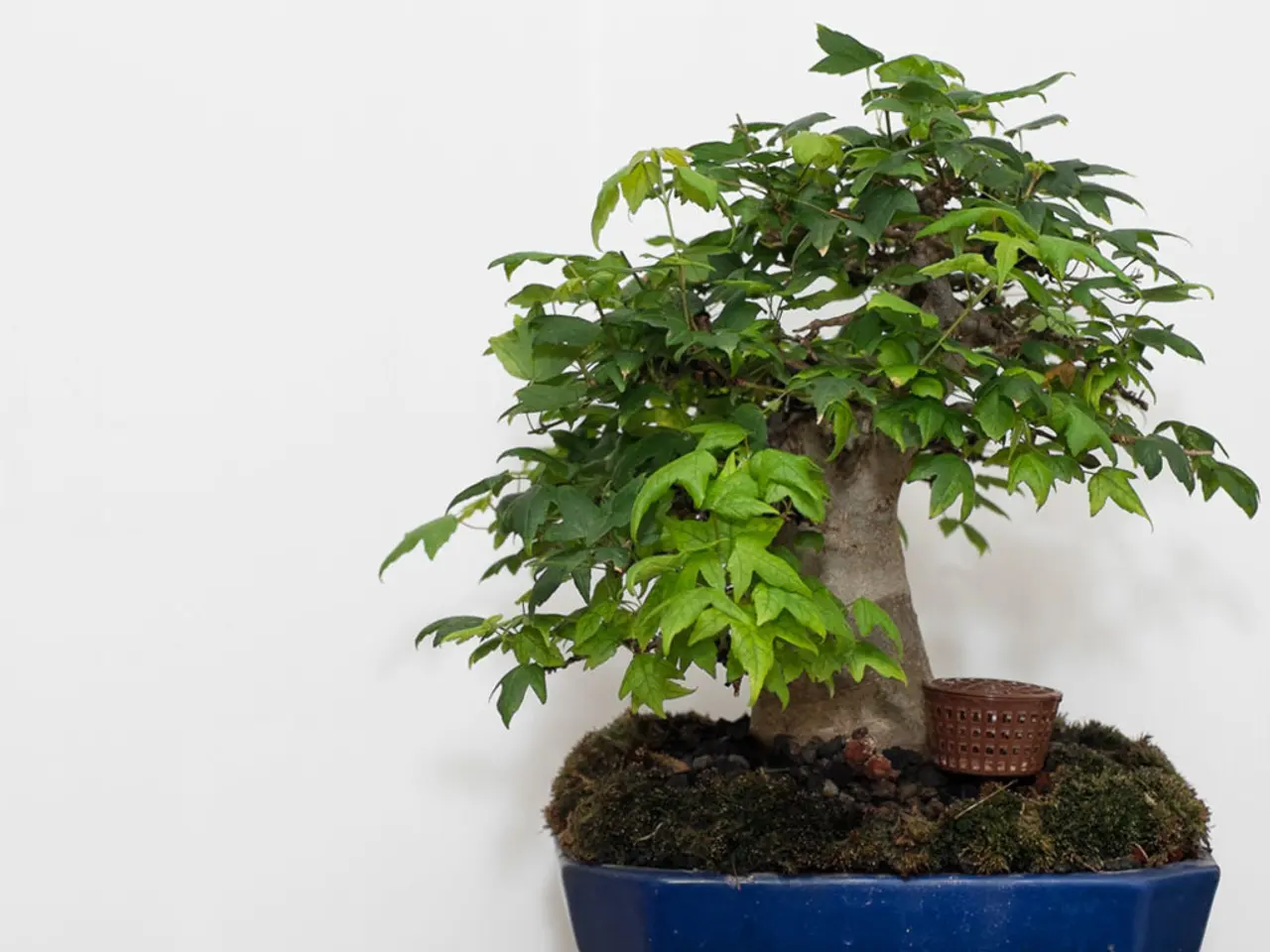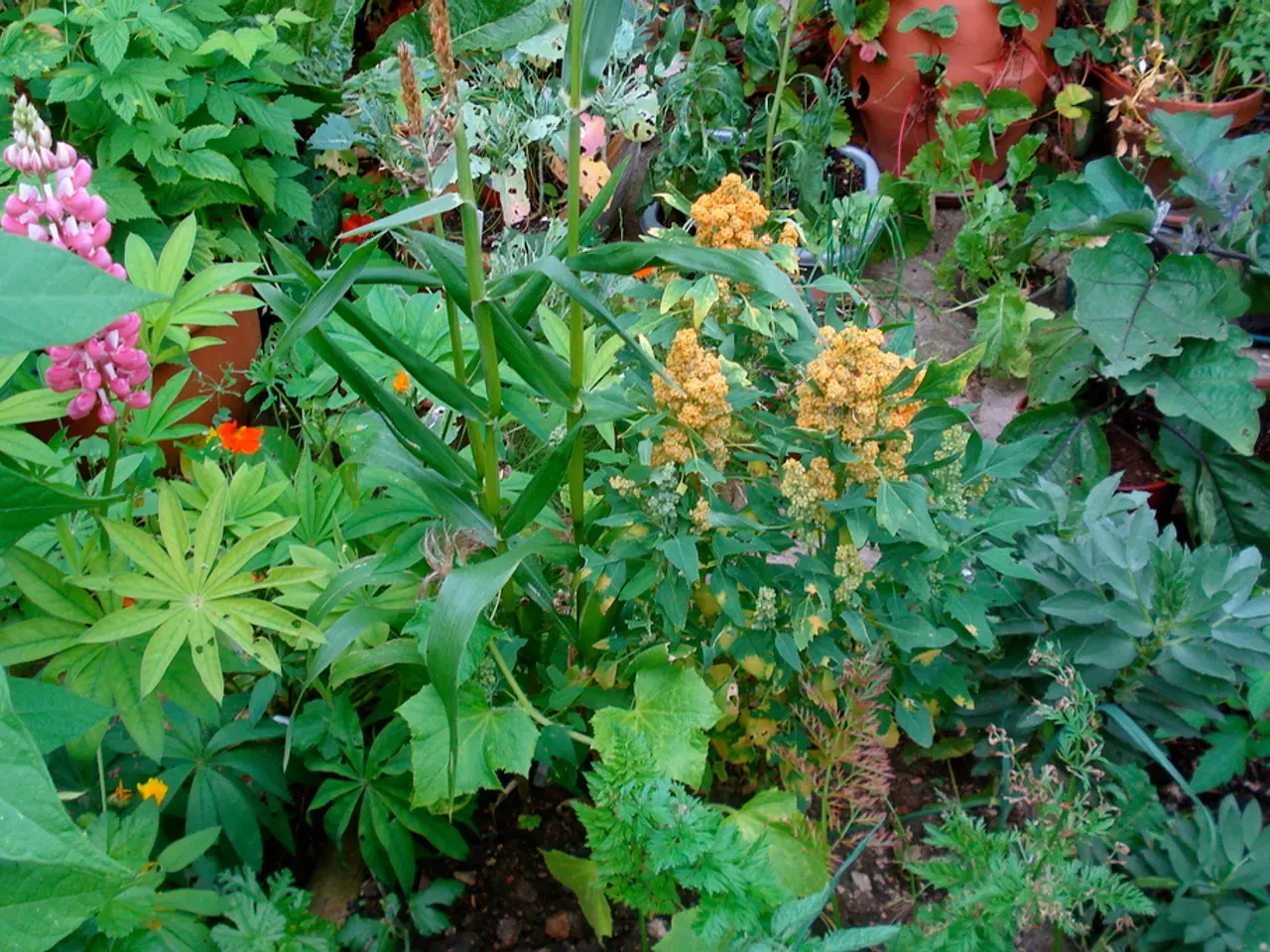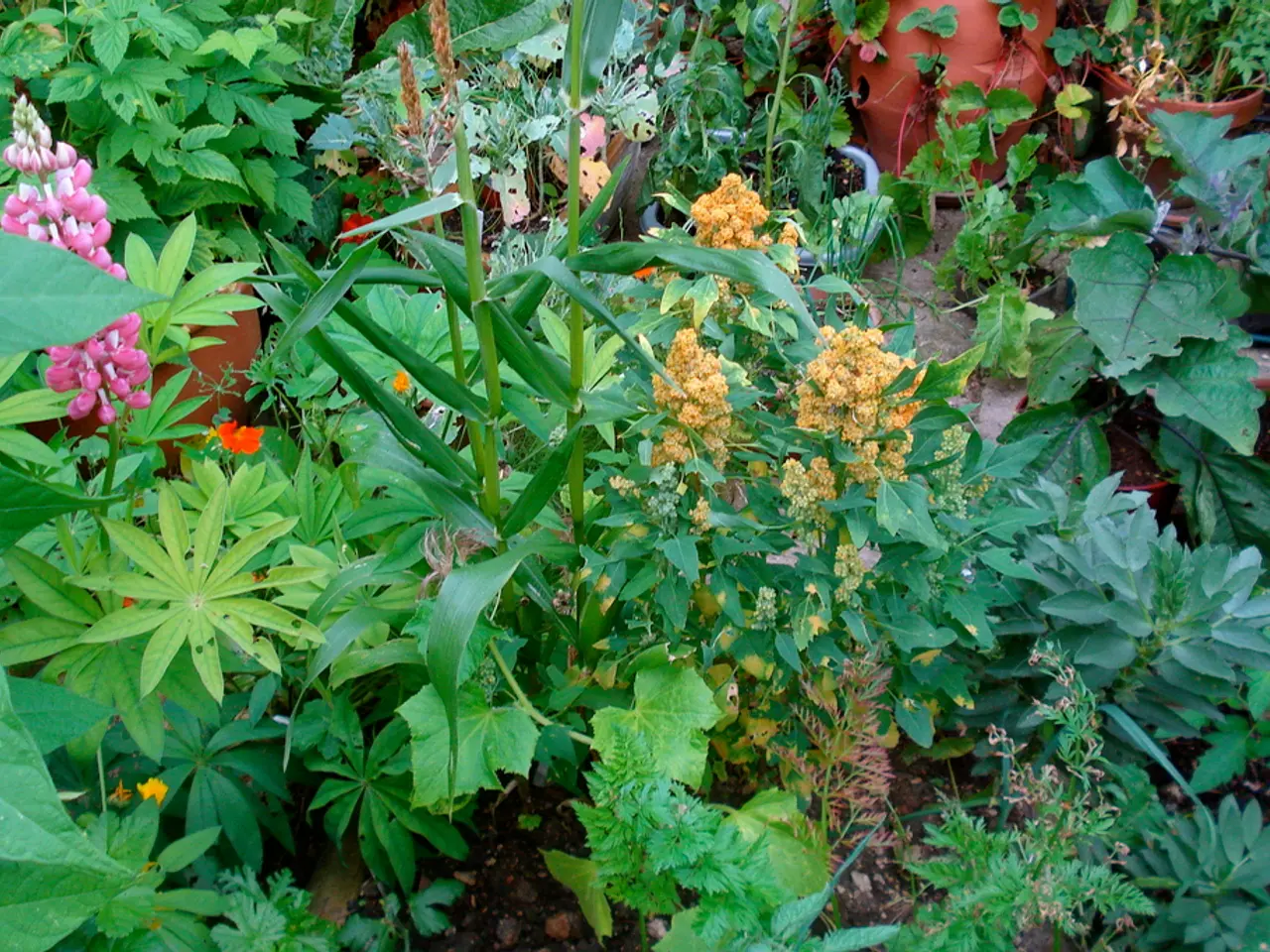Enhancing Bonsai's Visual Appeal through Exposed Roots Styling
In the artful world of bonsai, the roots are not just an afterthought but a crucial element that adds to the tree's aesthetic appeal and overall health. Here's a step-by-step guide to exposing and styling bonsai roots for visual balance.
Exposing the Roots
The process begins with pruning the roots, a step that enhances the visual appeal and health of the tree by promoting a smaller, more active root system. Using bonsai root pruning tools, cut away older, lignified roots, allowing new feeder roots to grow. This careful pruning exposes the roots, known as Nebari, and prepares them for styling.
To enhance root visibility and control the tree's size, use shallow pots. Shallow pots also improve drainage, reducing the risk of root rot.
Styling for Visual Balance
Positioning the tree in the pot so that the exposed roots are visible but not overwhelming is key. Ensure the tree is centered and balanced. Rotate the tree to create a visually appealing front, often with the most interesting or balanced view facing forward.
Prune branches to maintain shape and create movement within the design. Use wire to shape branches and create a balanced silhouette. Avoid wiring into the bark, and adjust wires as needed.
Aesthetics and Display
Place the bonsai in bright, indirect light to highlight the roots and ensure overall health. Maintain high humidity to prevent root drying, especially if the roots are exposed over time.
Additional Tips for Visual Balance
Create harmony by balancing the tree's shape with symmetrical and asymmetrical elements. Use the space around the roots and branches to create visual interest and balance. Consider the color and texture of the roots and tree bark, and highlight these elements through proper placement and lighting.
By carefully exposing and styling the roots, you can create a visually striking bonsai tree that showcases its unique features while maintaining its health and balance. The harmony achieved in root design elevates the bonsai from a mere ornament to a living, breathing masterpiece that exudes the essence of nature.
Growing bonsai trees with exposed roots indoors year-round requires careful monitoring of humidity, temperature, and light exposure to guarantee the tree's thriving. Soil mixes for bonsai trees with exposed roots should retain moisture but drain excess water, like a mix of akadama, sphagnum moss, and perlite.
To prevent pests from damaging the exposed roots of a bonsai tree, inspect the tree regularly and treat any infestations promptly with insecticidal soap or neem oil. The harmonising of root design ensures a visually stunning whole that complements the tree and its pot.
The pot serves as a canvas that showcases the intricate beauty of the roots, while the process of wiring and spreading roots allows for the creation of subtle curves and twists, and the fanning out of roots, respectively. Bonsai trees with exposed roots can be incorporated into outdoor landscaping designs, adding a unique touch of elegance and sophistication.
The balance between the roots and the tree, and the roots and the pot, is essential in bonsai root design. The combination of wiring and spreading techniques results in a visually stunning foundation for a bonsai tree. Working on the roots of a bonsai tree provides opportunities to create a sense of balance and proportion, turning the crafting of bonsai roots into a work of art that whispers secrets of the natural world.
- To further enhance the aesthetic appeal of your bonsai tree, consider expanding your collection to include home-and-garden pieces that complement the lifestyle of a home-and-garden enthusiast, such as a pot designed to showcase the intricate beauty of the tree's exposed roots.
- For a harmonious garden, consider incorporating bonsai trees with exposed roots into your home-and-garden design, especially in the home-and-garden section dedicated to home-and-garden activities like gardening and pruning, where they can serve as a reminder of the balance between nature and art.




